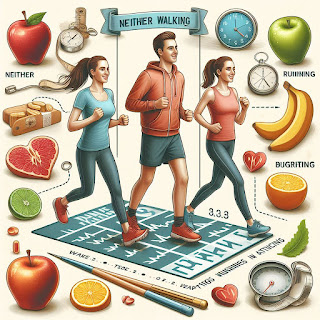The Fashion Industry's Shift Towards Inclusivity
A New Era of Diversity and Empowerment
Introduction
The fashion industry, long criticized for its narrow beauty standards, is undergoing a major transformation.
Today, brands are embracing inclusivity, showcasing diverse body types, ethnicities, and abilities in their campaigns.
This shift is not just a passing trend but a response to a growing demand for representation and authenticity in fashion.
Why Inclusivity in Fashion Matters
For decades, mainstream fashion has perpetuated unrealistic beauty ideals, often sidelining people who do not fit traditional molds.
However, modern consumers, especially Gen Z and Millennials, are driving change by demanding brands reflect real-world diversity.
The rise of body positivity, gender-neutral fashion, and sustainable practices has pushed the industry towards a more inclusive future.
1. Body Positivity and Size-Inclusive Fashion
The movement for body inclusivity has led to an increasing number of brands expanding their size ranges.
Companies like Rihanna’s Savage X Fenty, Aerie, and Universal Standard have been at the forefront, showcasing models of all shapes and sizes.
The days of size-zero-only runways are fading, with plus-size models now gracing major fashion weeks and advertisements.
Key Developments:
- Luxury brands like Gucci and Chanel are including plus-size models in their campaigns.
- Retailers such as ASOS and H&M now offer extended size ranges.
- The demand for inclusive fashion is reflected in sales, with size-inclusive brands outperforming traditional fashion labels.
2. Diversity in Race and Ethnicity
For years, the fashion industry has faced criticism for underrepresenting people of color. Today, brands are making efforts to feature models from different racial and ethnic backgrounds.
Campaigns now celebrate natural beauty, breaking away from Eurocentric beauty standards.
Key Developments:
- Fenty Beauty’s 40-shade foundation range set new standards for diversity in beauty and fashion.
- Brands like Dove and Nike emphasize inclusivity in their advertising campaigns.
- African, Indian, and Middle Eastern designers are gaining global recognition for their work.
3. Disability Representation in Fashion
The representation of differently-abled individuals in fashion is another major milestone.
Adaptive fashion is becoming a key focus, with brands designing clothing that is both stylish and functional for people with disabilities.
Key Developments:
- Tommy Hilfiger Adaptive and Zappos Adaptive design stylish, accessible fashion.
- Vogue featured disabled models on its cover for the first time in 2023.
- Runways now include models using wheelchairs and prosthetics, normalizing disability representation in mainstream fashion.
4. Gender-Neutral and Androgynous Fashion
With the rise of gender fluidity, brands are stepping away from strict binary clothing norms.
Gender-neutral fashion collections are increasing in popularity, breaking the stereotype that certain styles are only meant for men or women.
Key Developments:
- Louis Vuitton and Balenciaga have introduced gender-neutral collections.
- Brands like Telfar and Collina Strada design unisex apparel.
- Younger generations are actively supporting brands that break gender norms.
5. Sustainability and Ethical Fashion’s Role in Inclusivity
Inclusivity also extends to ethical fashion, ensuring fair labor practices and sustainable sourcing.
Fast fashion’s impact on marginalized communities has led consumers to demand ethical production and transparency from brands.
Key Developments:
- Patagonia and Reformation champion sustainability and ethical production.
- Brands are hiring models from indigenous and underprivileged communities.
- Fashion houses are committing to sustainable, cruelty-free materials.
How to Apply to Become a Model
For aspiring models looking to break into the inclusive fashion industry, connecting with the right agencies is key.
Here are some reputable modeling agencies and recruiters that focus on diverse representation:
- IMG Models – A top international agency representing diverse talent.
- Wilhelmina Models – Known for working with a wide range of models, including plus-size and disabled models.
- Ford Models – One of the most established agencies prioritizing diversity.
- Elite Model Management – Scouting talent worldwide with a growing focus on inclusivity.
- Zebedee Management – Specializes in representing disabled and transgender models.
- The Lions Management – Focuses on body positivity and breaking conventional standards.
Many of these agencies allow online applications, so aspiring models can submit their portfolios and details via their official websites.
Social media platforms like Instagram and LinkedIn are also useful for networking with industry professionals and recruiters.
The Impact of Inclusive Fashion on Society
The shift towards inclusivity in fashion is more than just a marketing strategy; it is a powerful movement fostering self-confidence, representation, and social acceptance.
Young girls today grow up seeing models who look like them, reinforcing the idea that beauty comes in all shapes, sizes, and backgrounds.
Conclusion
The fashion industry's transformation towards inclusivity marks a new era where beauty is defined by diversity.
As more brands embrace real-world representation, the industry moves closer to breaking stereotypes and redefining standards.
This evolution not only benefits consumers but also sets a precedent for future generations, proving that fashion is for everyone.












Comments
Post a Comment
250 words minimum